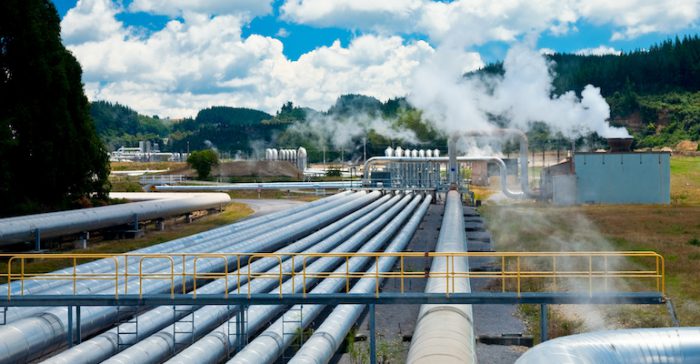This article originally appeared on ACHR News on March 11, 2019
The global geothermal market is forecasted to reach $4 billion in 2024
While geothermal still represents just a fraction of the overall energy market, a renewed interest in energy efficiency and clean, electric technologies is creating a favorable environment for growth. Per a December 2018 study by Global Market Insights Inc., the global geothermal market is forecasted to reach $4 billion in 2024.
“Demand for geothermal is healthy around the globe, but we certainly have a lot of headroom to grow — especially in North America,” said Tim Litton, director of marketing communications, WaterFurnace Intl. “We offer utilities a powerful way to shave peak demand, create stable year-round usage, and increase net revenue while we offer building owners a way to decrease energy costs, create positive cash flow, and increase comfort.”
In addition, states like New York are increasingly setting the bar for the sustainable community, with legislation and policies that are helping to drive the adoption of geothermal heat pumps.
STATE OF THE MARKET
North America continues to trail European countries in the demand for geothermal, although manufacturers say the U.S. market is also heading for a rise. In January, for example, Canada announced it was funding the country’s first geothermal power plant, with the government providing $25.6 million for the facility. Located in southeastern Saskatchewan, it will produce enough energy to power approximately 5,000 homes while taking the equivalent of the 7,400 cars’ yearly emissions out of the atmosphere.
“There are some countries, Sweden being one, where it’s mandatory; they’ve completely eliminated oil,” said Kyle Murray, business development director, Bosch Thermotechnology Corp. “In the U.S. and Canada, the market will continue to grow because of interest from homeowners and developers, as well as utilities and states. Even though our [federal] government has decided not to, there are still a number of states committed to hitting climate goals: Vermont, New York, California. All the public utilities are looking at encouraging air-source and water-source heat pumps, because they see the future.”
Steve Smith, CEO of Enertech Global LLC, said awareness of geothermal heat pumps continues to grow due to the demand for more energy-efficient, green technologies. The reinstatement of the tax credits, more than anything, put installer and distributor confidence back into the industry, he said.
“Now, it’s our time to demonstrate that geothermal heat pumps make sense, even without a tax credit,” Smith said. “Home and building owners recognize there are more benefits to geothermal heat pumps than cost savings, like superior comfort, cleaner air, no outdoor unit, low maintenance, most environmentally friendly, etc. Additionally, from a bigger perspective, there’s a rise in all-geothermal neighborhoods for both residential and commercial, which demonstrates it can be installed at scale and be profitable for developers.”
Having the tax credits was what launched solar in the U.S. by reducing first cost of ownership, said Murray. Due to the reinstatement of the geothermal credit, he said demand is “definitely” up — probably by 20 to 25 percent, compared to 2017 and 2018.
Murray said he’s seen more growth on the residential side — although it’s still at less than 2 percent of the heating and a/c market — while commercial geothermal has come down a bit over the last couple years as VRF has started to make inroads into what have traditionally been geothermal projects.
While Enertech has always focused primarily on residential geothermal, Smith said he’s seen a shift toward more commercial geothermal projects.
“This is because large building owners and property developers see the multitude of benefits that comes with geothermal, like lowest life-cycle cost, no outdoor system, low operation costs, etc.”
